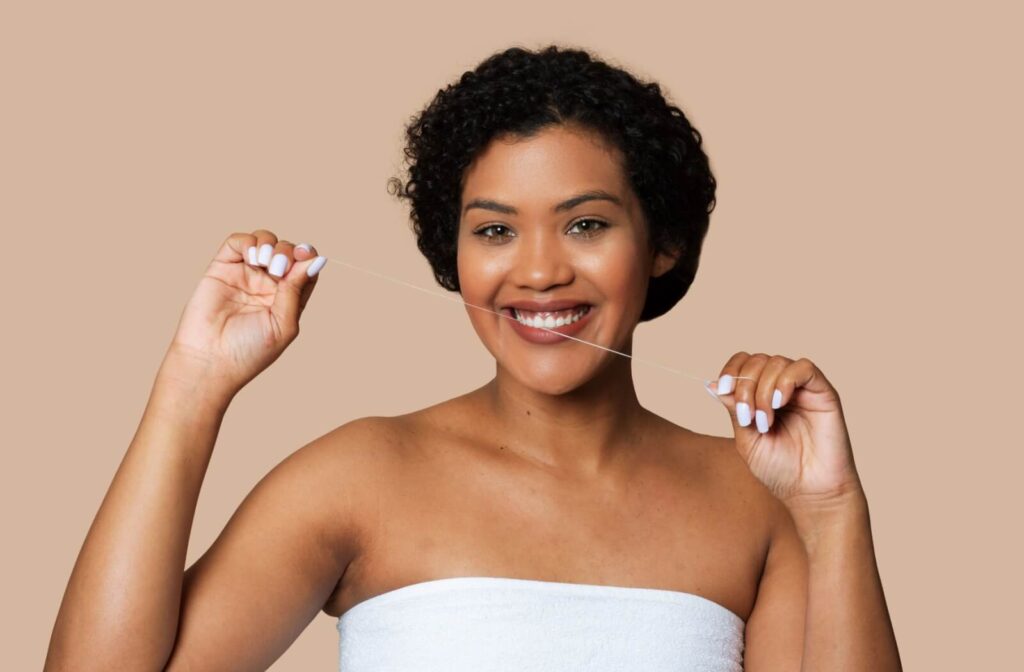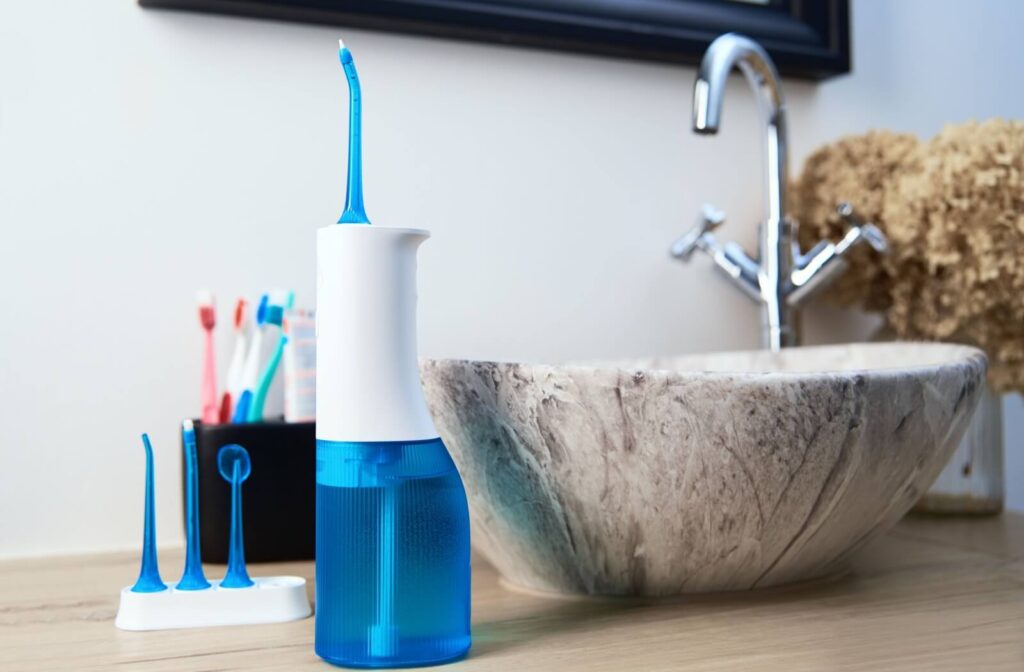
Flossing is a simple yet often overlooked practice that can greatly impact your oral health. Whether you floss daily or forget for weeks, confusion about the right routine is common. Should you floss once a day? Twice a day? Every other day? These questions can be perplexing.
The Canadian Dental Association advises flossing at least once a day. However, certain factors may increase or decrease this frequency.
Let’s clarify the flossing dilemma and discover the best routine for your oral health.
Why Do You Need to Floss?
Brushing your teeth is essential, but it doesn’t always reach the gaps between your teeth where plaque and bacteria can hide. Flossing is the only way to clean these hard-to-reach areas and prevent plaque build-up, which can lead to cavities, tooth decay, and gum disease. Plaque and tartar along the gum line can cause gingivitis and more severe gum disease if not addressed.
The Canadian Dental Association’s Take
The Canadian Dental Association advises flossing at least once a day for good oral health. Daily flossing removes food particles and plaque between teeth. However, if you use an electric toothbrush and brush thoroughly twice a day, flossing every other day may be enough. Electric brush heads rotate and vibrate, providing effective plaque removal, built-in timers, and gentler care for gums.
Addressing Bleeding Gums
Some people experience bleeding gums while flossing, leading them to avoid the practice. However, bleeding gums can indicate a need to increase your flossing routine. Daily flossing can help remove plaque buildup on your gums, preventing inflammation and bleeding. If bleeding gums persist, it’s essential to schedule an appointment with your dentist for a thorough evaluation.
Flossing Options
There are several flossing options available beyond traditional floss. These alternatives can make flossing more comfortable and practical, especially for those with small jaws, mobility issues, or other barriers to traditional flossing.
Traditional Flossing
Traditional flossing involves wrapping a string of floss around your fingers and using it to clean between your teeth and gums. Although effective, many people find traditional flossing difficult and uncomfortable. To make it easier:
- Use about 18 inches of floss to wrap around your fingers.
- Use gentle back-and-forth motions to avoid injuring your gums.
- Do not snap the floss between your teeth.
Flossing Picks
Flossing picks are disposable wands with a small piece of floss at the end. They are easy to use and do not require wrapping floss around your fingers. To use a flossing pick:
- Hold the pick with one hand.
- Guide the floss between your teeth with the other hand.
- Use a back-and-forth motion to clean between your teeth and gums.
Typically, floss picks are made of plastic, but eco-friendly versions made of sustainable materials are available to reduce plastic waste.
Water Flossers

A water flosser, also known as an oral irrigator, uses a pressured stream of water to clean between your teeth and along your gum line. They can be particularly effective for people with braces or other orthodontic appliances. To use a water flosser:
- Fill the reservoir with warm water.
- Point the nozzle at your gum line and turn on the machine.
- Guide the nozzle along your gum line and between your teeth.
Interdental Brushes
Interdental brushes are small brushes with tiny bristles designed to clean between your teeth and along your gum line. They come in different sizes to fit the spaces between your teeth. To use an interdental brush:
- Choose the appropriate size for your teeth.
- Insert the brush between your teeth.
- Use a back-and-forth motion to clean between your teeth and gums.
Those with braces may find interdental brushes easier to use than traditional flossing between brackets.
Air Flossers
Air flossers use air and water to remove plaque and food particles from between your teeth. They are easy to use and do not require touching your teeth or gums. To use an air flosser:
- Fill the reservoir with warm water.
- Point the nozzle between your teeth.
- Press the button to release a burst of air and water.
Schedule Your Next Dental Cleaning
Flossing is essential for good oral hygiene. Daily flossing greatly benefits your teeth and gums, but if you brush thoroughly twice a day, flossing every other day may suffice. Regular dental check-ups are crucial for a healthy mouth. Aim to see your dental team every six months for a professional cleaning and exam. Your dentist and hygienist can advise you on how often to floss and highlight areas you might be missing.
By staying committed to your flossing routine and seeking professional guidance when needed, you can achieve and maintain excellent oral health. Take charge of your dental hygiene and experience the positive impact it can have on your overall well-being by booking with Smyl Dentistry today.
Contact Information
- Phone: 416-531-2761
- Email: [email protected]
Address
- 608 Bloor Street W
- TORONTO, ON M6G 1K4
Hours
Parking
Green P parking on Palmerston and Euclid, residential street parking, meter parking on Bloor. Residential street parking from 10a-12a
Subway
One block over from TTC subway station (Bathurst)

